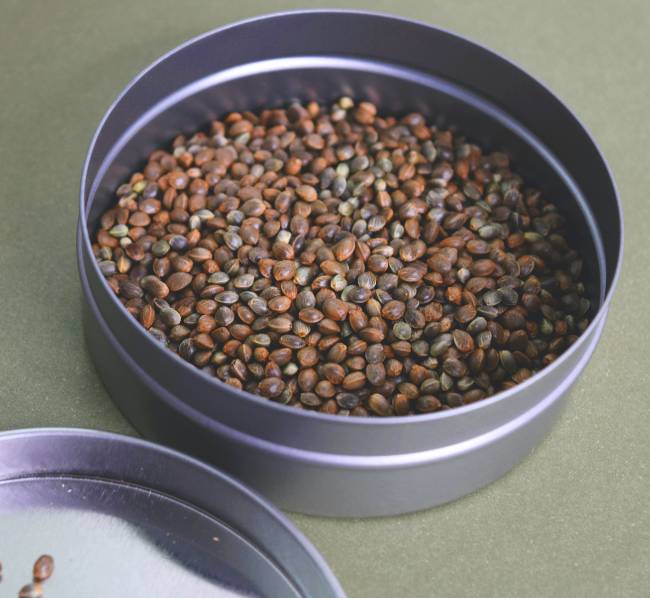You’ve got an allergy dog– a miserable one at that. Your dog is itchy. Like really itchy.
Itch, scratch, lick, repeat. Constantly. It wakes you up at night — so you know it’s keeping your dog up at all hours. You want relief for them (and admittedly yourself, too).
Omega fatty acids can absolutely offer that relief and help with skin allergies.
BUT (and we can’t stress this enough) each dog is different. What helps one dog may not be enough for another, and that’s why you may have to approach allergies differently.
Let’s get into it.

On The Agenda
What Are Omegas
Omegas are fat. Fat gets a bad rap (in part because of human diet trends), but there are good types of fatty acids in the fats’ family tree. You can learn all about that here, but we’re going to focus on one branch in particular– polyunsaturated fats.
You’ll find omega 3 and 6 on this branch, both of which are essential for pets. As carnivores, dogs can’t produce these on their own, so they have to come from the diet.
The Right Type of Omegas
There are also specific kinds of omega 3 & 6s that dogs benefit from– and ones they can’t. Let’s start with omega 3.
Omega 3

There are 3 types of omega 3s: EPA, DHA, and ALA.
EPA and DHA are readily available for the carnivore’s body to use — which means they are exactly what your pet needs.
EPA and DHA are found in grass-fed meats, fish like salmon and anchovies, and crustaceans like krill. When looking for these forms of omegas, choose small fish from the bottom of the food chain like anchovies and crustaceans like krill. They provide the cleanest sources of Omega 3s (EPA & DHA).
If you plan on using salmon oil, rotate it. A word of caution about using a generic “fish oil” for your dog’s allergies, too. It’s often impossible to know the source of the fish, which is one of the many reasons why fish oil isn’t our first choice for Omega 3s.

Other plant-based sources of Omega 3s like flax and hemp contain the form ALA. While they are fine as a fat source, they aren’t as readily available to your dog because the form has to be converted. Only 5-15% can be converted to the active EPA and DHA– meaning your dog only gets some benefit from these Omega 3s:
- Hemp Seed
- Flaxseed
- Chia Seeds
- Plant-Based Sources
So, you’ll need to pair any of these omegas with another source that offers active, ready-to-use forms of EPA & DHA if you plan to use them for their Omega 3 benefits.
Omega 6

There are 4 types of Omega 6: GLA, LA, AA, DGLA.
Omega 6s are a good source of fats for energy in moderation, but in excess can be proinflammatory.
Since Omega 6s like LA are readily available from cheap sources like corn and safflower, you have to be mindful of how much Omega 6 is in the diet, especially for allergy dogs.
Allergy dogs already have too much inflammation in the body, and an excessive amount of Omega 6s in their bowl would be like putting kerosene on a building that’s already ablaze.
While Omega 6s provide a good source of fats (in moderation), a specific type of omega 6 should be in every allergy dog’s bowl.
GLA– Gamma-linolenic acid is a type of Omega 6 that dogs need (and can’t manufacture on their own). It’s an essential fatty-acid chock-full of health benefits and can be found in quality sources like borage oil and evening primrose oil.
How Do Omegas Help?
Adding essential omega 3s and 6s to your pet’s bowl offers HUGE benefits throughout the entire body.
Active, ready-to-use forms of EPA and DHA from Omega 3s have anti-inflammatory properties that benefit the immune system, among many other areas of the body.


Essential GLA from Omega 6s hydrate the skin, helping your dog’s body produce its own protective oils that nourish the skin.
With the right amount and type of essential fatty acids Omega-3 (EPA & DHA) and Omega-6 (GLA), a dog experiencing allergies may be able to work through the allergic reaction and correct the hypersensitivity.
Why Do Some Dogs Get Better With Omegas Alone, But Some Don’t?
To understand why that’s the case, consider a common question around allergies. Why do only some dogs get allergies?
Many dogs are exposed to over-vaccination, herbicides, pro-inflammatory diets, and yet not all dogs get allergies; only some do.
It’s in large part because of the body’s innate ability to right the ship, so to speak. The body wants to return to homeostasis– it wants to heal disease, reduce inflammation, and sometimes it is as simple as getting the body the right nutrients for that to happen.
So, if the symptoms are mild, then start with omegas because they may be just what your pup needs. Add them to the bowl and see how your pup is in 4-8 weeks.
If the symptoms are more severe though–like they are IT to the CHY, itchyyy and…
- Constantly scratching — every night, like all night long
- Accompanied by incessant licking and red paws
- Swelling, lesions
- Panting, hot to the touch, restlessness
- Even “Frito” feet, thanks to opportunistic yeast

Then it’s time to send in the cavalry, bring out the big guns (and any other turn of phrase you can think of) because we’re getting to the root of the issue.
Looking Past Surface Symptoms for the Fix
Addressing surface symptoms does not always address allergies as a whole because you aren’t getting to the root of the issue– the underlying hypersensitivity.
To truly address allergies, the focus needs to be on the root cause: the body’s HYPERreaction.

It’s this overreaction that causes heat and inflammation to the skin and the symptoms that you see.
As the body’s detoxifier, the liver plays a crucial role here as well. When the immune system has that hypersensitive reaction, the liver undergoes tremendous stress as it tries to detox.
The first year it may be pollens, the year after that, pollens and molds, and it snowballs into this painful cycle of suppressing and then worsening allergy symptoms. Without a way to right the ship or rebalance the over-reaction, many allergies come back worse than ever next season.

So, the goal is to harmonize the body’s defenses. Using a combination of herbs to cool, tonify yin, and calm the body, you slowly begin rebalancing it.
Doing so gets to the root of the issue, so your pup can cope with everyday things like pollen that it’ll surely come into contact with again.
Where Do Omegas Fit?
Truly, as essential nutrients, omegas should be in every dog’s bowl from the time they are puppies, but it’s never too late to start.
Adding those Omegas alongside that combination of herbs will not only repair but to build skin integrity.

Remember, those Omega 3s (EPA & DHA) have powerful anti-inflammatory properties that benefit the immune system. It can help to bring down the heat and inflammation that over-reaction is causing to the skin. At the same time, essential Omega 6s (more specifically GLA) get to work to develop the skin’s integrity.
By using omegas (EPA, DHA, & GLA), you’re nourishing your pup’s skin to build a foundation of health for them.
The same can be said for all pets, though. Omegas play a crucial role in an allergy dog’s regimen, but every single dog (and cat, for that matter) benefits when Omegas are added to the bowl.
When added to the diet, Omegas benefit more than just your dog’s skin and coat, too– think heart and brain health, and of course, the immune system.
So, the biggest takeaway– allergies or not, omegas should always be in your four-legger’s bowl.
Share this Post

Dr. Chris Besent
Chris Bessent, DVM, MSOM, Dipl. OM, L.Ac. has over thirty years of experience in veterinary medicine including certificates in veterinary acupuncture, veterinary chiropractic and veterinary Chinese herbology. Imbued with Eastern philosophy and the knowledge that food is the foundation of health, Dr. Bessent also received her degree in veterinary nutrition and began to formulate recipes fit for a carnivore from nothing but whole foods. Currently, she divides her time between the Simple Food Project and Herbsmith, both of which are owned and operated out of her facilities in southeastern Wisconsin.

Kayla Behling
Kayla is the Content Writer for Herbsmith. She has a cat named Professor Cat-Faced Meowmers, who goes by Kitty, and a goof of a dog, named Duck. She stays busy biking trails, playing board games, and searching for the next best craft beer.




